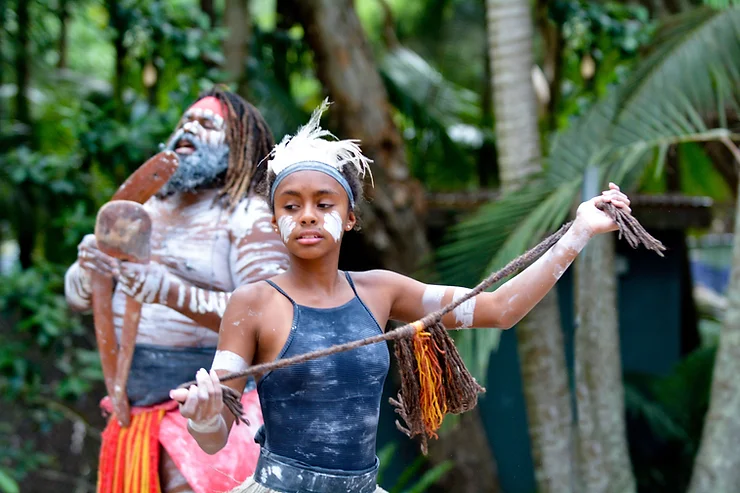The current world is a digital one and a significant amount of interaction occurs online through social media platforms, forums, and content-streaming. The most tech-savvy among the population are children and young people. They have grown up in a world where access to instant information and the creation of a digital identity through social media are normal parts of everyday life.
97% of teenagers aged between 15 and 17 in Australia have access to the internet and it is believed they spend up to 18 hours or more on the internet per week. One in five young people have experienced online bullying and around 35% of females and 22% of males have been exposed to consensual and non-consensual sexting. In 2021, over 33,000 reports were received raising concerns that children were being exposed to online exploitation.
Aboriginal and Torres Strait Islander (ATSI) children and young people use the internet as a source of connection to their culture and are more likely than other children to make new friends and connections online. The eSafety Commissioner estimates that 37% of Aboriginal and Torres Strait Islander children and young people will use the internet to upload their own content for cultural expression and have higher levels of civic engagement, and political and social debates online.
However, Aboriginal and Torres Strait Islander children and young people are three times more likely to experience harm online through exposure to hate speech, discrimination and bullying. They are also more likely to meet with online connections face-to-face, which increases their risk of physical exploitation and victimisation.
In 2021, over 33,000 reports were received raising concerns that children were being exposed to online exploitation.
The Child Safe Standards
The Child Safe Standards set out the 11 key expectations for organisations working with children and young people to ensure that they are safe and protected from abuse and harm. Organisations are required to comply with, implement and embed the Child Safe Standards into their policies, procedures and practices. When it comes to digital safety of Aboriginal and Torres Strait Islander children and young people, there are two Child Safe Standards which are extremely important:
- Standard 1: organisations establish a culturally safe environment in which the diverse and unique identities and experiences of First Nation’s children and young people are respected and valued, and
- Standard 9: physical and online environments promote safety and wellbeing while minimising the opportunity for children and young people to be harmed.
These two Child Safe Standards require organisations to ensure that Aboriginal and Torres Strait Islander children and young people can express their culture and enjoy their cultural rights in a safe and supported environment, and that organisations understand the importance of a child’s wellbeing and safety through relevant policies, procedures, systems and processes. Organisations are required to mitigate risk in both physical and online environments without compromising a child’s rights and are expected to identify and confront racism and support and facilitate inclusion.
How to Keep Aboriginal and Torres Strait Islander Children Safe Online
Organisations have an obligation to ensure children are safe in all environments and they have a duty of care to take all reasonable steps to keep children and young people safe from harm. Given children and young people engage so heavily online, it is crucial that cyber safety information and resources are accessible in a range of forms which children and young people can understand. It is also crucial that organisations understand the unique vulnerabilities of all children and young people, and ensure that all environments, both physical and online are culturally safe.
The eSafety Commission has developed a number of online resources which seek to promote safety and security for Aboriginal and Torres Strait Islander children online. The resources have been developed by Aboriginal organisations and community to ensure the information is culturally appropriate and inclusive, and the resources are understood. The eSafety Commission is working to close the gap on digital literacy by ensuring that information and resources are published in a number of languages and in a variety of written and video formats.
Organisations should provide resources to children and young people which are inclusive and accessible. Developing resources with the child at the forefront helps build trust and promotes meaningful inclusion based on respect and consideration for a child or young person’s individual and unique cultural needs. Organisations also need to be aware of technological trends and risks online so that they can promote a child’s safety. Risk mitigation is an essential component of safeguarding in both physical and online environments, as is the capacity to detect child abuse and recognise indicators of harm. Child safety training is a vital component of increasing staff capacity and awareness in this regard.
How Can Safe Space Legal Help?
The team at Safe Space Legal have extensive child safety and safeguarding experience. We have worked with a number of organisations to ensure they are meeting their moral and legal obligations including in relation to Aboriginal and Torres Strait Islander children and young people. Safe Space Legal offer a large range of child safety services including:
- Drafting policies, procedures and codes of conduct;
- Delivering training to ensure organisations are aware of their child safety obligations;
- Conducting child safety and safeguarding investigations which are compliant with the Reportable Conduct Schemes;
- Ensuring that complaints handling and reporting processes are compliant with the Reportable Conduct Schemes;
- Providing assistance and support to respond to allegations of child abuse;
- Conducting gap and root cause analysis; and
- Provide sound legal advice on risk mitigation.
Contact office@safespacelegal.com.au or call 03 9124 7321 to organise a complementary discussion in relation to your organisation’s child safety and safeguarding needs.

